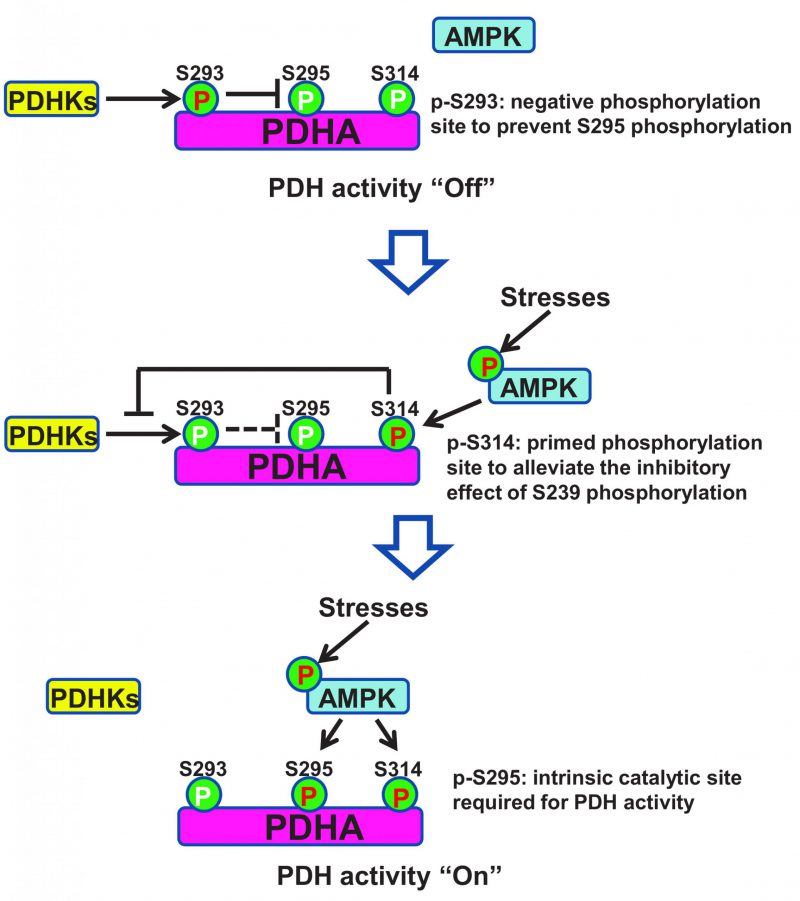Back to article: AMPK maintains TCA cycle through sequential phosphorylation of PDHA to promote tumor metastasis
FIGURE 2: A schematic model is presented to dissect how AMPK maintains PDH activity through sequential phosphorylation on its catalytic subunit PDHA. When AMPK is under low activity, PDHA is mainly phosphorylated by PDHKs on S293, which serves as a negative signal to inhibit PDHA S295 phosphorylation and PDH activity. When AMPK is activated under stress or other stimuli, it induces PDHA S314 phosphorylation, which disrupts PDHA-PHDK interaction and subsequent PDHA S293 phosphorylation, thereby relieving the inhibitory effect of PDHA S293 phosphorylation on PDHA S295 phosphorylation, which serves as an intrinsic catalytic site required for PDH activation and pyruvate metabolism. Red P indicates high phosphorylation and white P indicates low phosphorylation.

